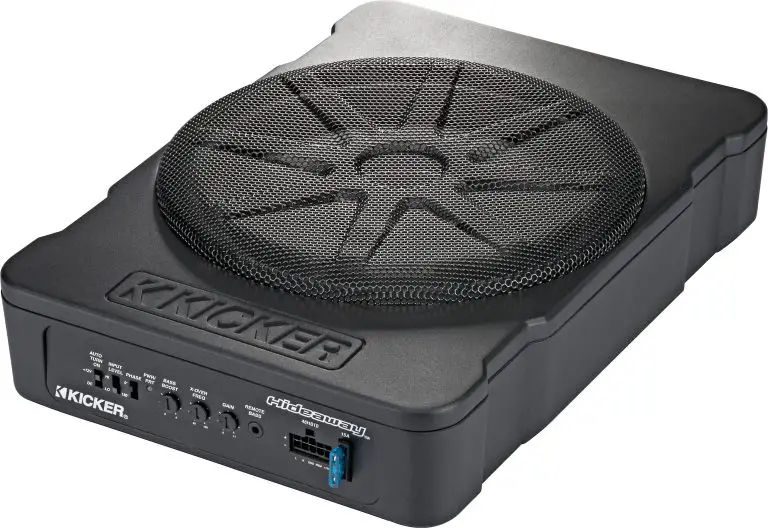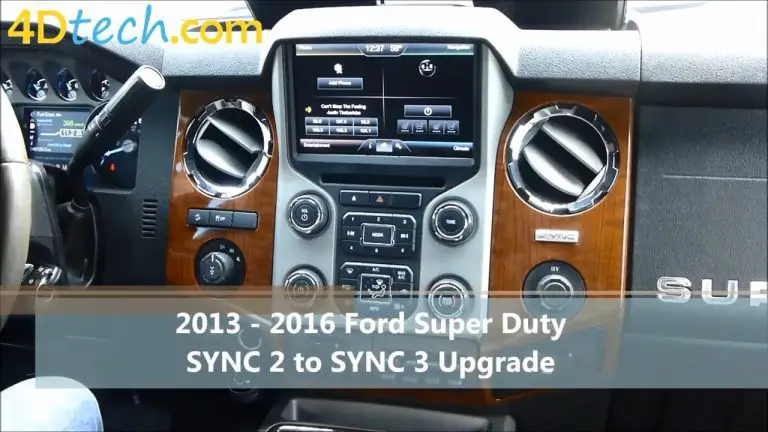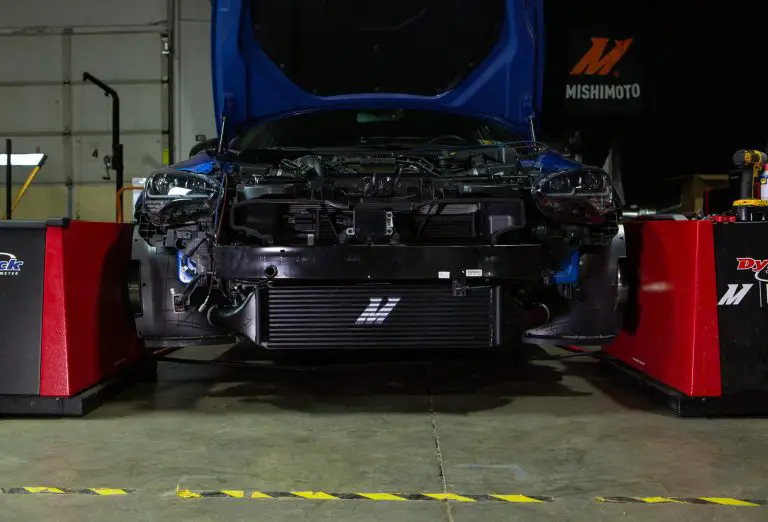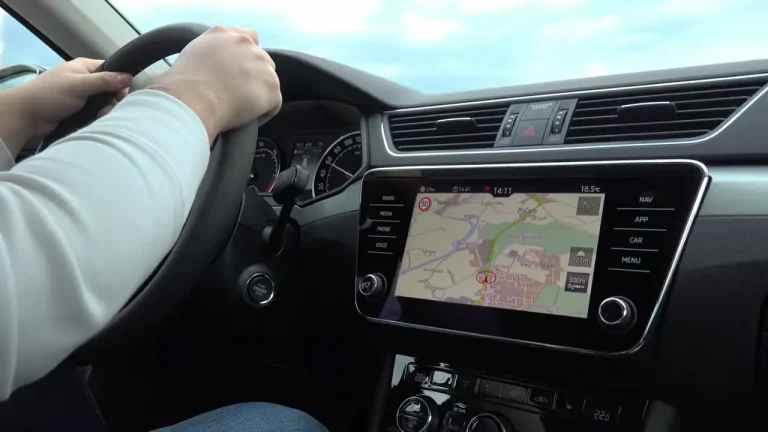Starting a Car with a Bad Crankshaft Sensor (Temporary Solution)
The crankshaft sensor plays a crucial role in the engine’s operation, providing vital information about the position and speed of the crankshaft. When this sensor malfunctions, it can lead to a host of problems, including difficulty starting the engine. However, in certain situations, there are temporary measures you can take to get your vehicle up and running.
Before we proceed, we must emphasize that starting a car with a bad crankshaft sensor is not a permanent solution. It is merely a way to get you back on the road temporarily while you arrange for professional repairs. Proper diagnosis and repair of the crankshaft sensor issue should be your ultimate goal to ensure the optimal functioning of your vehicle.
In the following sections, we will guide you through the necessary precautions, step-by-step instructions, and limitations involved in starting a car with a faulty crankshaft sensor. It’s crucial to approach this process with caution and be mindful of potential risks.
Remember, if you are uncomfortable performing these steps or if you need further assistance, it is always advisable to consult a qualified mechanic or technician. They have the expertise and specialized tools to accurately diagnose and repair crankshaft sensor issues, ensuring the long-term reliability of your vehicle.
So, let’s dive into the topic of starting a car with a bad crankshaft sensor and explore the temporary measures that can help you get your engine running.
Safety Precautions
Before attempting to start a car with a bad crankshaft sensor, it’s important to prioritize safety. Working on a vehicle’s electrical system and engine components can pose risks if proper precautions are not taken. Here are some essential safety precautions to follow:
1. Safety Gear: Wear appropriate safety gear, such as gloves and safety glasses, to protect yourself from potential hazards. This will help prevent injuries and ensure a safer working environment.
2. Disconnect the Battery: Before performing any work on the vehicle’s electrical system, disconnect the negative terminal of the battery. This will help prevent accidental electrical shorts and reduce the risk of electrical shock.
3. Allow the Engine to Cool: If the engine has been recently running, give it enough time to cool down before attempting any repairs. Hot engine components can cause burns or other injuries. Wait for the engine to reach a safe temperature before proceeding.
4. Secure the Vehicle: Ensure that the vehicle is parked on a flat, stable surface and engage the parking brake. This will prevent the vehicle from rolling or moving unexpectedly while you work on it.
5. Follow Proper Procedures: Always follow the manufacturer’s instructions and recommended procedures for working on your specific vehicle model. This includes proper use of tools, safety guidelines, and any vehicle-specific precautions mentioned in the owner’s manual.
6. Avoid Excessive Force: When working with engine components, avoid applying excessive force or using tools that are not suitable for the task. Improper use of tools or excessive force can lead to damage to the vehicle or personal injury.
7. Take Caution with Fuel System: When disabling the fuel system, be aware of the potential for fuel leaks or fuel vapors. Avoid smoking or using open flames in the vicinity and handle fuel and fuel lines with care to prevent accidents.
8. Use a Fire Extinguisher: Keep a fire extinguisher nearby in case of any unexpected fires. Ensure that the fire extinguisher is appropriate for automotive use and is in good working condition.
Understanding the Crankshaft Sensor
The crankshaft sensor, also known as the crank position sensor (CPS), is a vital component in a vehicle’s engine management system. It plays a crucial role in providing the engine control module (ECM) with accurate data about the position and speed of the crankshaft. This information is essential for various engine functions, including fuel injection timing, ignition timing, and synchronization of the engine’s mechanical components.
The crankshaft sensor is typically located near the crankshaft pulley or flywheel, where it can detect the rotational motion of the crankshaft. It utilizes either a magnetic or a hall effect sensor to measure the position and speed of the crankshaft’s rotation. The sensor generates electrical signals based on the crankshaft’s movements, which are then sent to the ECM for processing and controlling the engine’s operation.
The ECM relies on the data provided by the crankshaft sensor to accurately time the ignition spark, control fuel injection, and monitor the engine’s overall performance. By precisely determining the crankshaft’s position and speed, the ECM can optimize the engine’s combustion process, resulting in improved efficiency, power delivery, and emission control.
It’s important to note that the crankshaft sensor is susceptible to wear and damage over time, which can lead to erratic engine behavior and performance issues. When the sensor malfunctions or fails, it can cause a range of symptoms, such as engine misfires, stalling, difficulty starting, or a check engine light illumination.
Proper understanding of the crankshaft sensor’s role and function is essential when diagnosing and troubleshooting engine problems. By recognizing its significance in the engine management system, you can better grasp the impact of a faulty or malfunctioning crankshaft sensor on your vehicle’s performance.
If you suspect issues with your crankshaft sensor, it is recommended to consult a professional mechanic or technician. They have the expertise and diagnostic tools to accurately diagnose the problem and perform any necessary repairs or replacements. Ignoring or neglecting crankshaft sensor issues can result in further engine damage and potential safety hazards.
Steps to Start a Car with a Bad Crankshaft Sensor
Starting a car with a bad crankshaft sensor should only be considered a temporary solution, as it is important to address the underlying issue and have the sensor repaired or replaced as soon as possible. However, in certain situations, you may need to start the car with a faulty crankshaft sensor to get it to a safe location or a nearby repair facility. Here are the steps to follow:
1. Ensure a Well-Charged Battery: A strong battery is essential for starting the engine without relying on the crankshaft sensor. Verify that your vehicle’s battery is fully charged and in good condition.
2. Disable the Fuel System: Locate the fuel pump fuse or relay in the fuse box or power distribution center. Remove or disable the fuse or relay to prevent fuel from reaching the engine. This step is necessary to avoid potential engine damage or fuel-related safety hazards.
3. Crank the Engine Manually: Insert the key into the ignition and turn it to the “On” position without starting the engine. Locate the starter solenoid or starter motor near the engine or transmission. Using a long insulated screwdriver or a similar tool, manually engage the starter by carefully bridging the positive terminal of the starter with the ignition switch terminal or starter solenoid terminal. This will crank the engine without relying on the crankshaft sensor.
4. Monitor RPM and Engine Response: While manually cranking the engine, keep an eye on the tachometer if your vehicle has one. If not, listen for any signs of the engine firing or attempting to start. Observe the engine’s response and determine if it starts or if there are any abnormal noises or vibrations. Note that starting the engine without a functioning crankshaft sensor may result in rough idling or poor performance.
5. Proceed with Caution and Seek Professional Repair: If the engine starts and runs, exercise caution while operating the vehicle. Keep in mind that driving with a faulty crankshaft sensor can lead to further engine problems and potential safety risks. Drive the car to a nearby repair facility or your trusted mechanic to have the crankshaft sensor diagnosed and repaired.
Precautions and Limitations
It’s important to understand that starting a car with a bad crankshaft sensor should only be considered a temporary measure to get the vehicle to a safe location or a nearby repair facility. Here are some precautions and limitations to keep in mind:
Limited Engine Performance
Starting the engine without a functioning crankshaft sensor may result in limited engine performance. The engine may idle roughly, lack power, or exhibit irregular behavior. It’s important to drive cautiously and avoid high speeds or demanding driving conditions.
Lack of Engine Monitoring
Without a working crankshaft sensor, the engine control module (ECM) won’t have accurate data about the crankshaft’s position and speed. As a result, the ECM won’t be able to properly adjust fuel injection timing or ignition timing. This can lead to reduced fuel efficiency, increased emissions, and potential engine damage if driven for an extended period.
Limited Diagnostic Capabilities
Starting the car without a functioning crankshaft sensor may prevent accurate diagnosis of other engine issues. The absence of real-time crankshaft position data can make it challenging to identify other potential problems that could be affecting engine performance.
Potential Safety Risks
Driving with a faulty crankshaft sensor can pose safety risks. The engine’s irregular behavior may result in unexpected stalls or loss of power, especially during critical driving situations. Exercise caution while operating the vehicle and be prepared for potential engine-related issues.
Seek Professional Repair
While it may be possible to start the car with a bad crankshaft sensor temporarily, it’s crucial to schedule professional repair as soon as possible. A qualified mechanic or technician can accurately diagnose the crankshaft sensor issue and perform the necessary repairs or sensor replacement. Avoid relying on temporary measures for an extended period.
Follow Manufacturer Guidelines
Always refer to the vehicle’s owner’s manual or consult with a professional for specific instructions related to your car’s make and model. Different vehicles may have unique considerations or precautions when starting the engine without a functioning crankshaft sensor.
Alternative Solutions
When faced with a bad crankshaft sensor, starting the car without relying on the sensor can be challenging. However, there are a few alternative solutions that you can consider in certain situations. Here are a few options:
Use a Diagnostic Tool
If you have access to a diagnostic tool or scanner that can read and clear trouble codes, you may be able to temporarily disable the crankshaft sensor code. By clearing the code, you might be able to start the car, but keep in mind that this is a temporary solution and the underlying issue still needs to be addressed.
Inspect and Clean the Sensor
In some cases, the crankshaft sensor may be obstructed by dirt, debris, or oil buildup, causing it to malfunction. If you can access the sensor, inspect it for any visible signs of contamination and clean it using an appropriate cleaning agent. This may help restore its functionality temporarily.
Check Wiring and Connections
Faulty wiring or loose connections can also lead to crankshaft sensor issues. Inspect the wiring harness connected to the sensor for any signs of damage, fraying, or loose connections. If you identify any issues, repair or reconnect the wiring as needed. Keep in mind that this is a temporary solution, and professional repair is still necessary.
Tow or Transport the Vehicle
If starting the car without the crankshaft sensor proves difficult or risky, consider arranging for the vehicle to be towed or transported to a nearby repair facility. This is the safest option, especially if you’re unsure about the condition of the sensor or if the vehicle’s drivability is compromised.
FAQ:
Q: Can I start my car with a bad crankshaft sensor?
A: Yes, it is possible to start a car with a bad crankshaft sensor, but it should only be considered a temporary solution. It is important to address the underlying issue and have the sensor repaired or replaced as soon as possible.
Q: What are the risks of starting a car with a faulty crankshaft sensor?
A: Starting a car with a faulty crankshaft sensor can lead to limited engine performance, rough idling, reduced fuel efficiency, increased emissions, and potential engine damage if driven for an extended period. There is also a risk of unexpected stalls or loss of power, which can be hazardous in critical driving situations.
Q: How can I start a car with a bad crankshaft sensor?
A: Starting a car with a bad crankshaft sensor requires some alternative methods. One approach is to manually engage the starter by bridging the positive terminal of the starter with the ignition switch or starter solenoid terminal. However, it is important to follow safety precautions and seek professional repair as soon as possible.
Q: Can I drive my car with a faulty crankshaft sensor?
A: While it may be possible to drive a car with a faulty crankshaft sensor for a short distance, it is not recommended. Driving with a faulty sensor can lead to further engine damage, decreased performance, and potential safety risks. It is crucial to have the sensor repaired or replaced by a qualified mechanic.
Q: What should I do if my car has a bad crankshaft sensor?
A: If you suspect issues with your crankshaft sensor, it is best to consult a professional mechanic or technician. They have the expertise and diagnostic tools to accurately diagnose the problem and perform any necessary repairs or replacements. Ignoring or neglecting crankshaft sensor issues can result in further engine damage and potential safety hazards.
Q: Can I temporarily disable the crankshaft sensor code to start the car?
A: In some cases, if you have access to a diagnostic tool or scanner, you may be able to clear the trouble code related to the crankshaft sensor temporarily. However, this is not a permanent solution, and the underlying issue still needs to be addressed by a professional mechanic.
Q: Are there any DIY solutions to repair a bad crankshaft sensor?
A: Repairing or replacing a crankshaft sensor is best left to professionals due to the complexity of the engine’s electrical system. It requires specialized tools and knowledge. Attempting a DIY repair without the necessary expertise can lead to further damage or incorrect installation.




